Home > About NCCH > TQM Center
TQM Center
Nobuhisa Soga, Shigetaka Yoshinaga, Asuko Sekimoto, Hiroshi Tanizaki, Daisuke Watabe, Chiaki Hayashi, Mihoko Asanabe, Toshihiro Ishihara, Naoya ikeno, Kazuaki Shimada
What is TQM Center?
TQM (Total Quality Management) is a management approach where unified quality control objectives are set for the entire organization. In Japan, such activities are widely known with the abbreviated term, TQM.
At the National Cancer Center Hospital, we drive quality improvement in medical care engaging teams throughout the organization, tackling issues spanning departments and committees.
TQM activities in our hospital
In October 2020, the TQM team was established as a Department, later enlarged as the TQM Center. TQM activities were first initiated on a trial basis.
For some time, our hospital has supported and encouraged quality improvement initiatives such as quality control activities, by organizing annual competitions, sharing activites with posters, awarding outstanding projects as voted for by staff . Though effective, maintaining the momentum post awards was an issue. The TQM department was then established as a team that can constantly drive initiatives.
To improve the quality of medical care, maximizing both patient and staff satisfaction were focused on. To gain insight, QC activity projects in the past were reviewed, issues identified and analyzed, instigating changes in awareness as concerns were studied from unique vantage points. The effect of its activities being recognized, on June 1, 2021, the TQM Center was established.
Directly reporting to the Hospital Director, the Director of the TQM Center is delegated authority, thus the team works effectively with units across the board. Currently, its focus is in collaboration with committees, those for patient service improvement and outpatients, and as such drives changes toards a hospital that is highly appreciated by both patients and staff.
Past Initiatives
-
Reviewing patient flow, analysis of patient waiting times, engaging related departments in response to COVID-19 (more slots and longer reception hours for early blood collection, changing opening hours, area expansion for more outpatient treatment center beds, sharing of consultation rooms, more outpatient volunteers), reducing waiting times and alleviating crowded areas.
-
Responding to COVID-19, hand sanitizer stands along patient/staff paths were made available, with alcohol supply ensured.(Fig.1)
-
Videos to familiarize patients with examinations, floor maps were made, and digital signage were studied, all to support patients, with the patient's point of view in mind.(Fig.2)
-
A kitchen car rota was set up, to help employees’ access to fresh, nutritious meals without leaving the premises, improving staff satisfaction.(Fig.3)
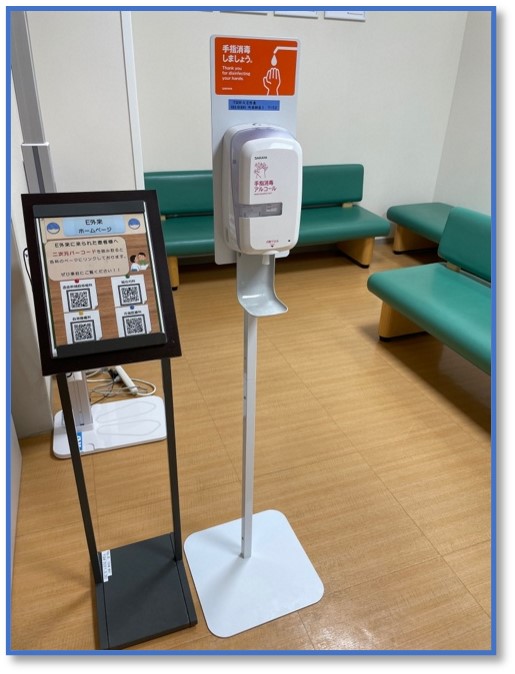
Fig.1
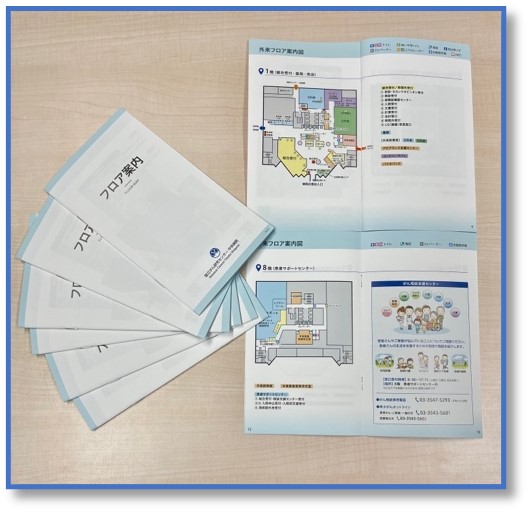
Fig.2
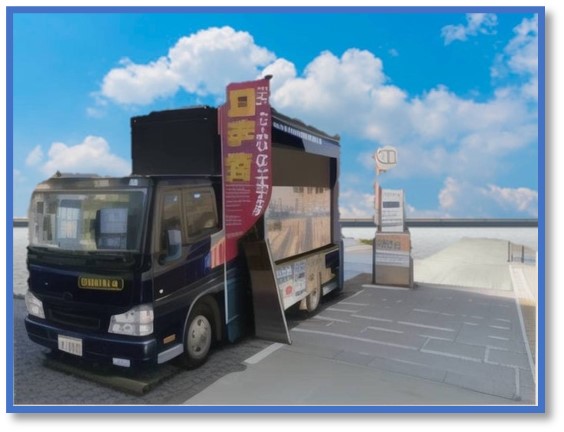
Fig.3
-
Management flows were digitalized and visit flows altered, reducing contact, in response to the pandemic.(Fig.4)
-
QC activity information sharing within the hospital:Outstanding Departments were praised for their activities, the information shared across the hospital.(Fig.5)
-
For comprehensive quality management, quality indicators (QI) are utilized in hospital operations.
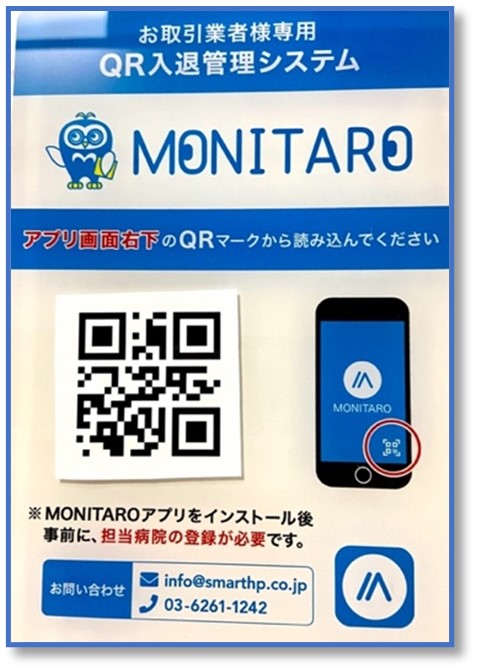
Fig.4
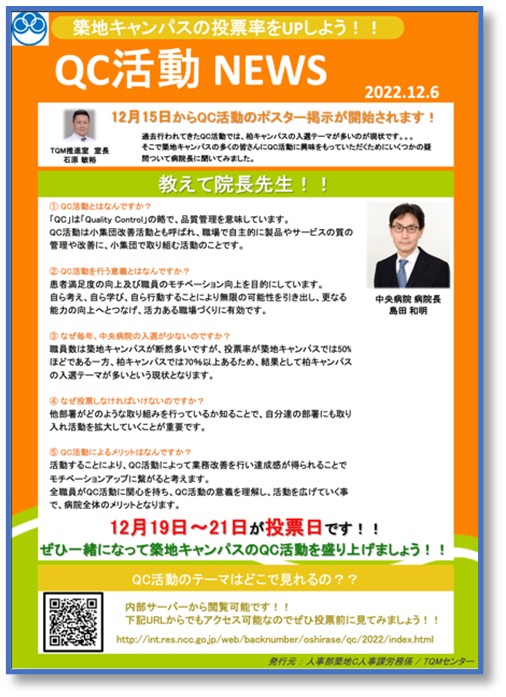
Fig.5
Hospital QC Activities - FY2022
Grand Prize
・Nutrition Management Office (SDGs (energizing sustenance with produce procurement))
Produce costs up again? Never give up, nutrition management team!
Excellence Award
Clinical Laboratory (Blood sampling success rate improvement operation unit)
Mission: Impossible ~ raise blood sampling success rate
Special Award
Nursing Department (Team go! go! gardening!)
Filling our lots with lovely plants! Garden plants nourished with imagination!
Department of Respiratory Surgery and Nursing (Team★Outside)
Prep video to help patients undergo surgery for lung cancer ~ what to expect at the hospital ~
Future Initiatives
- We will continue with the following:
1)More use of QI indicators in management and operations
2)Improve medical care quality, patient satisfaction, staff satisfaction - All staff to proactively serve respective roles with wisdom and ingenuity, at times beyond their job descriptions, to better deliver to patients, and to share such experiences of patient-oriented quality and efficiency improvement.
- Support the development, introduction, and wide adoption of new ideas and methods.
- Improve quality of medical care under the leadership of top management, by widely and clearly sharing objectives, and by setting a plan to secure and improve "quality of patient-oriented medical care" and "quality efficiency" throughout the organization.
- Encourage and welcome ideas for improving the hospital from all staff, staff are encouraged to proactively carry out quality improvement activities.
